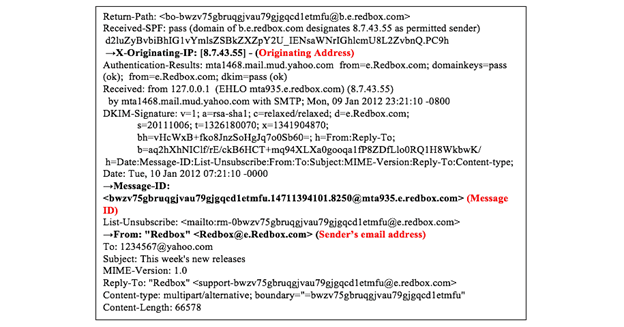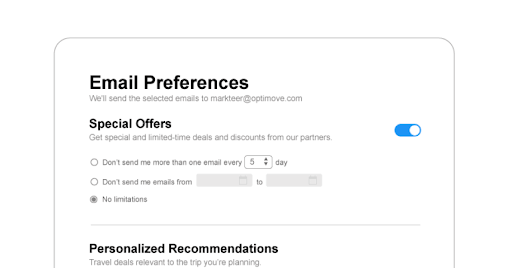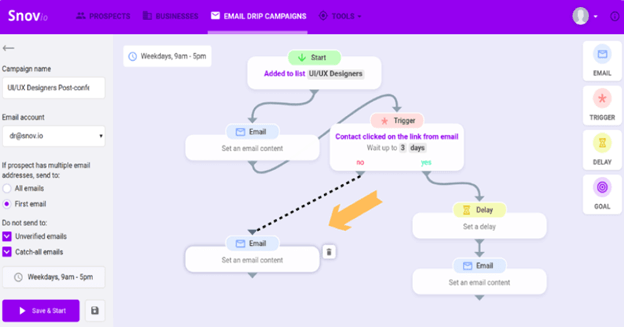Enjoy this spotlighted blog from Snovi.io
Are your emails getting through to your audience and raising support for your cause? Many organizations launch emailing because they’re encouraged by the anticipated ROI. On average, every $1 spent on an email campaign brings $44 of returns. But when it comes to estimating added revenue from email marketing, deliverability is one of the first indicators to consider.
No matter how relevant the content in newsletters or welcome emails is, if they don’t get into the recipients’ inboxes, senders won’t get conversions. So, how can you get the desired effect from email marketing? Start by learning what may affect email deliverability and how to improve it.
What is email deliverability?
To put it simply, email deliverability is when emails reach recipients’ inboxes. This statement shows the core of mailing efficiency as a whole. In other words, the goal is to make sure the message won’t end up in the contact’s spam folder or get stuck in the email sender’s outbox.
How to improve email deliverability
There are a couple of factors that have an impact on deliverability, with the sender’s domain reputation being the main one. Numerous spam complaints or a poor open ratio only worsen the credibility of your domain. Chances are that subsequent emails will have an increase in bad deliverability.
Maybe you’ve already detected an issue and want to improve email deliverability. Maybe you’re just eager to be on the safe side when launching campaigns. Either way, check out some common sender traps and ways to avoid them.
Authenticate your email domain
This step is particularly relevant for senders who use custom email domains, rather than common ones ending with @gmail.com, @yahoo.com, etc. Because mailing systems are all about protecting their users from spamming or spoofing, they suspect domains of unknown origin. That’s why a sender has to validate the credibility of his or her domain with the following 3 methods:
- DKIM signature
- SPF TXT record
- DMARC authentication.
Maintain proper IP allocation
Emails are associated with the TCP/IP protocol. This means that reaching out to contacts from different IP addresses could harm the sender’s reputation (aka your organization’s reputation). As a result, the deliverability ratio will drop.
However, there are cases when several IPs are required—perhaps when the organization’s reaching out volume is high. It’s recommended to use a dedicated rather than a shareable IP address for every mailbox. In this case, if a sender suddenly sees spikes in email volumes, he or she will be able to identify abusive persons by checking out IPs in sent emails’ headers and matching them with the dedicated IP.
You can find an X-Originating-IP in the email’s header and detect from what IP address the copy was sent
Image source
Perfect the opt-in process
Did your supporters opt in? Senders who collect email addresses have to launch a double opt-in verification process—in other words, to get a right to use them. Technically, this is done by sending new subscribers emails and asking them to verify their recent subscriptions. But, a single opt-in is permissible as well.
An opt-in email is the first follow-up with a recipient, so it’s better to keep it short and be precise. Put one key message and highlight it clearly. Don’t use generic CTAs like “Click here.” If you provide something to download, add a summary to that.
Write subject lines of the non-spammy variety
Subject lines play a key role in open rates, but they also impact deliverability. Avoid writing assertive, exaggerated, or insisting subject lines. These should be catchy but not spammy. Never use spam-trigger words like “the last chance,” “expect to earn,” and others. Make sure you also focus on personalization, as this may increase the open ratio by up to 26%.
Provide a preference center
Give your subscribers a page where they can tick off desired options for receiving newsletters from you. This should include the type of content and the frequency. Doing this isn’t just a courtesy—preference centers actually help to retain customers better. For example, if a person doesn’t want to receive your weekly digest, he or she can opt out of these particular emails instead of unsubscribing from the overall mailings.
With email preference centers subscribers get more control over mailings they receive
Image source
Clean up your list regularly
If you test email deliverability and see it decreases over time (other things being equal), it could mean you’re having issues with a mailing list.
Removing recipients who have unsubscribed isn’t enough to keep it accurate. It’s important to continuously review new addresses in your contact list and clean it up from spammy or duplicated emails. Also, pay attention to role-based addresses like ones that begin with “admin,” “support,” or “info.” These may be technical mailboxes used by several recipients at once, so it’s a long shot your message will ever be seen and read.
Avoid spam traps
What exactly are spam traps? These are “honeypots” used by internet service providers or individual webmasters to identify those who violate email marketing best practices. These traps launch regular campaigns without getting consent from recipients.
It’s important to be on the lookout for spam traps, as they may be pristine or recycled. Some indicators include email addresses that are never used or emails that were abandoned for some reason. Unfortunately, getting rid of them is tricky. In general, it’s recommended to stop mailing to contacts who don’t react to your emails after a year or more.
Send an email that people love
An engaging copy is the most assured way to win recipients’ hearts, increase open ratios, and—consequently—boost deliverability. But it’s not always about content alone. Design, accessibility on mobile, and CTAs are just as important for deliverability.
To know what works for your subscribers best, don’t neglect A/B testing. It’s better to test no more than 2 elements at a time, like a button’s color and text. Also, for accurate conclusions, assess results in terms of not only clicks and opens but impacts on the revenue as well.
Check feedback loops
Set up a feedback loop to know when you receive spam complaints from recipients. Refer to your mailing services provider’s instructions and follow the procedure. For example, if you use Gmail, you will need to add a unique identifier in the header of every individual email campaign. Identifiers with an unusual spam rate will be displayed on your dashboard in Postmaster Tools.
Send emails at just the right frequency
The majority of marketers send up to 5 emails per month at the maximum. This frequency can be a benchmark for regular mailings such as weekly or monthly updates. But there’s also a category of emails that are sent in response to the user’s actions. This could be order confirmations or reminders on certain actions. For these, it’s better to use automated drip campaign launchers like the one from Snov.io or other email automation providers and specify triggers upon which certain email content will be delivered to recipients.
Automated triggered campaigns allow sending recipients the right content and at a right time
Image source
Check blacklists
Stuck on a blacklist? You can check out the sender score in suspected emails or IP blacklists, like MxToolbox, Spamhaus Project, Woodys SMTP Blacklist, and others. These look up complaints about your IP address or sender’s domain and show if there were any issues with them.
To run mailing campaigns safely and effectively, it’s important to check your email deliverability ratio. The steps and tips above will hopefully help you detect possible issues and fix them. We want to help ensure that your domain reputation won’t be suspended by email spam checker systems. After all, putting out the right messaging is crucial for your cause.
The post How to Improve Email Deliverability appeared first on Nonprofit Hub.




0 Commentaires